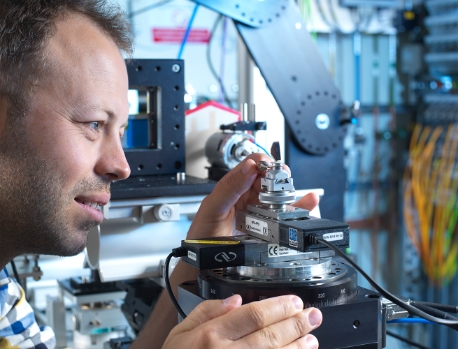
NASA brings Apollo moon rocks to Harwell Campus
50 years after man first stepped on the Moon NASA’s rock samples from the Apollo missions will be examined at Harwell’s Diamond Light Source. These important rock samples still have a lot to tell us about how the Moon was formed and could also improve our understanding of the formation of volcanoes here on Earth. A common green mineral called Olivine found in the Earth’s sub-service and in Moon rock samples is being examined at Diamond Light Source, the UK’s national synchrotron, by an international collaboration involving scientists from Tenerife, the US and the UK.
Dr. Matt Pankhurst NASA lunar principle investigator based at the Instituto Volcanológico de Canarias explains; “We have used a new imaging technique developed at Diamond to carry out 3D mapping of Olivine. These maps will be used to improve understanding of the Moon’s ancient volcanic systems and help to understand active geological processes here on Earth.”
Research is being undertaken using an advanced X-ray speckle imaging technique developed on Beamline B16 at Diamond and with NASA having approved the use of 18 lunar samples for these experiments it is clear that there is an understood advantage to studying the samples as well as preserving them.
NASA’s Apollo sample curator, Ryan Zeigler believes these decisions are becoming easier as more powerful, non-destructive research techniques are developed, “researchers are now using state-of-the-art diffusion modeling to establish the history of individual crystals of olivine from 3D images. These techniques will be applied to the new data gathered during this beamtime. The results will add to our understanding of lunar and planetary formation, topics which have been continually debated since the samples were first returned to Earth.”
Talking about other possible uses for Beamline 16, Professor Andrew Harrison CEO at Diamond Light Source concluded: “A successful demonstration of the new technique at B16 will pave the way, we hope, for extended collaboration with NASA and maybe even No10* Downing Street and the Natural History Museum might be interested in loaning us their own samples.”
For more information on Harwell’s Space Cluster and it’s research capabilities click here
Image courtesy of Diamond Light Source: Dr Matt Pankhurst studies one of the moon rock samples from the Apollo 12 & 15 missions at Diamond Light Source